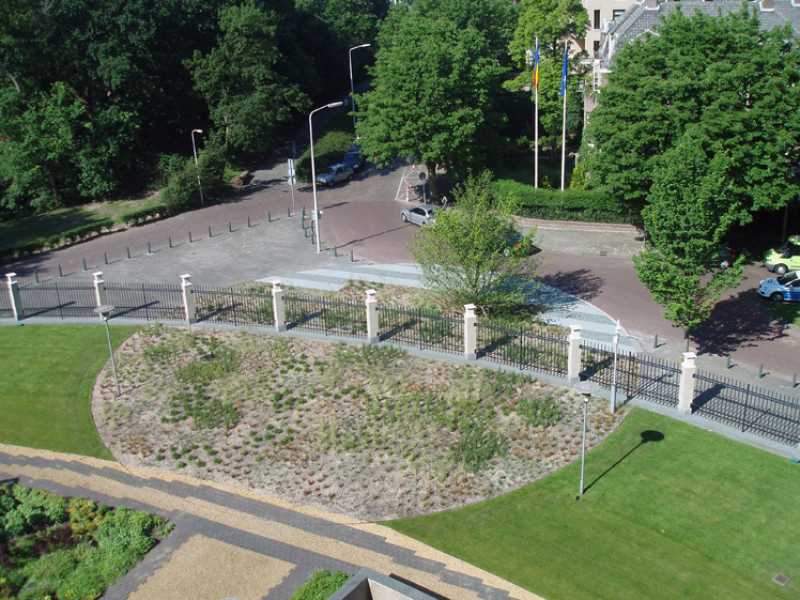OPCW monument Voebe de Gruyter foto: Stroom Den Haag
Voebe de Gruyter: OPCW Monument for the victims of chemical weapons
Location: World Forum The Hague
Monument marking the tenth anniversary of the OPCW (Organization for Prohibition of Chemical Weapons).The site is intended to offer comfort to all those concerned with the victims of chemical weapons and stands for “Peace and Hope.The monument was officially opened by Queen Beatrix on May 9.
The monument after a concept by artist Voebe de Gruyter (1960, The Hague) consists of three trees:
1.A living tree 8 meters high that takes CO2 and gives oxygen.
2.A solar tree that absorbs light and gives energy to a webcam.3. A virtual tree that makes the monument visible day and night and grows through the traces of visitors.
In the pavement is a text in the six languages of the OPCW - English, Arabic, Russian, Spanish, French, Chinese and also in Dutch This “constituent tree” is in a solid state, below freezing. By light particles from someone's gaze, it can thaw, partially melt with it.
Voebe de Gruyter
Lives and works in Brussels and Amsterdam. She studied at the Rietveld Academy and the Rijksacademie in Amsterdam and spent a period in New York. She is represented in the collections of the Stedelijk Museum Amsterdam, Museum voor Moderne Kunst Arnhem and the Bouwfonds collection.
World Forum The Hague
In this future park designed by DS landscape architects, the original dune vegetation is the starting point. A circle with a diameter of 25 meters has already been laid out with tall grasses, slabs of natural stone and cobblestones - part of the promenade - and accommodates the monument.
'Slow light'. Explanation Voebe de Gruyter and debate with philosopher Rob van Gerwen, light scientist Kobus Kuipers and journalist Anna Luyten.
The monument was created to mark the 10th anniversary of the OPCW. The Ministry of Foreign Affairs finances the artwork, the municipality of The Hague finances the installation and maintenance. Stroom The Hague was asked to advise.









